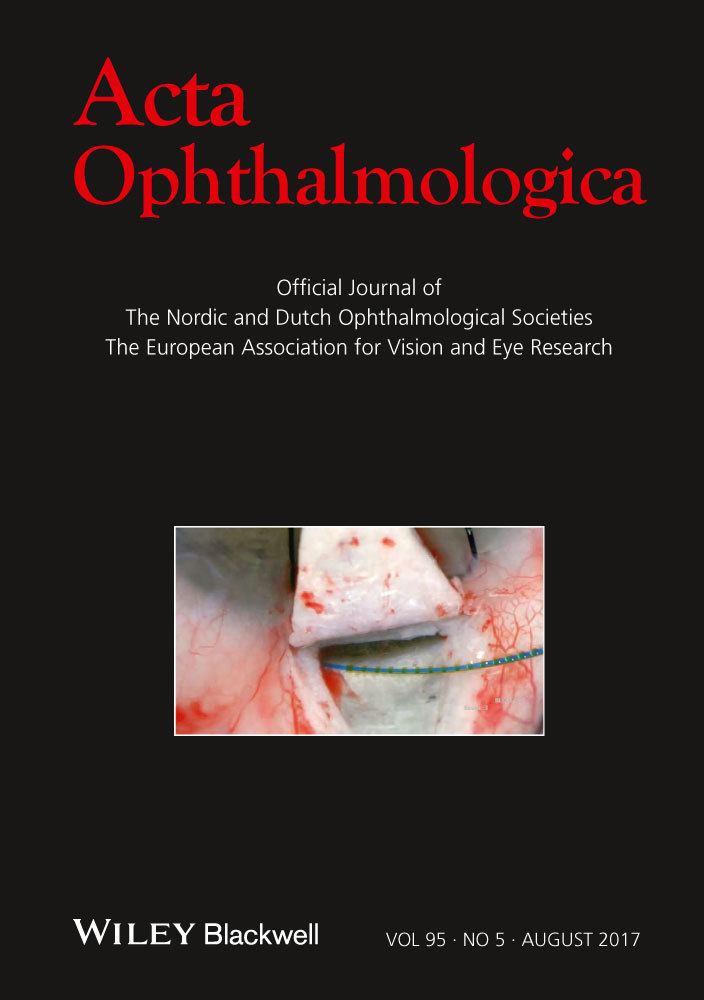Dilated fundus exam and associated findings in spontaneous subconjunctival haemorrhage
Spontaneous non-traumatic subconjunctival haemorrhage (SCH) is frequently encountered in emergency and walk-in clinic visits. In some centres, a dilated fundus exam is performed to exclude retinal pathology. In this study we investigated the yield of a dilated fundus exam in spontaneous non-traumatic SCH and associated risk factors.
The study was approved by an Institutional Review Board and adhered to the tenets of the Declaration of Helsinki. Medical records of 3900 consecutive patients who were seen at the Massachusetts Eye and Ear Infirmary (MEEI) emergency department from March to June 2012 were reviewed, of which 107 (2.7%) were diagnosed with a spontaneous non-traumatic SCH. A total of 2219 patients concurrently diagnosed with other ophthalmic conditions were utilized as age- and gender-matched controls. History of hypertension, warfarin, acetylsalicylic acid (ASA) or non-steroidal anti-inflammatory drug (NSAID) and antihistamine use were recorded by history taking. All patients received a complete ophthalmic exam by a trained ophthalmologist and dilation with 2.5% phenylephrine/0.5% tropicamide. Chi-square tests were performed to compare control and SCH groups. p-values <0.05 were considered statistically significant.
All presentations of SCH were unilateral and dilated fundus exams failed to show any retinal pathology. There was a significant difference between SCH and control patients in terms of warfarin use (p = 0.02), ASA/NSAID use (p <0.0001) and antihistamine use (p =0.002), but not hypertension (Table 1).
| Variable | Control group n = 2219 | Subconjunctival haemorrhage n = 107 |
|---|---|---|
| Age in years (mean ± SD) | 49 ± 18 | 51 ± 22 |
| Male | 1176 (53%) | 58 (54%) |
| Warfarin usea | 32 (1.4%) | 5 (4.7%) |
| Acetylsalicylic acid/non-steroidal anti-inflammatory drug usea | 191 (8.6%) | 22 (20.6%) |
| Antihistamine usea | 56 (2.5%) | 9 (8.4%) |
| History of hypertension | 529 (23.8%) | 25 (23.4%) |
- a Statistically significant by chi-square test.
The lack of retinal pathology is consistent with a previous study of SCH related to warfarin use (Taamallah-Malek et al. 2013). These findings suggest that dilated fundus exams may be of limited value in patients with unilateral, non-recurrent spontaneous SCH. However, a larger number of patients are needed to provide the necessary statistical power to robustly identify subgroups that may benefit from dilated fundus exams.
Bilateral SCH has been associated with more serious pathology such as scurvy, haematological dyscrasia and ocular or systemic malignancy (Lee et al. 2000) (Sloan et al. 1999) (Leiker et al. 2009). However, all 107 cases in our series were unilateral and there were no cases of recurrent SCH.
We found a significant difference in warfarin and ASA/NSAID use in patients with spontaneous SCH compared to the control group which is to be expected given the mechanisms of these medications. There was also a statistically significant difference in antihistamine use, which may be due to increased frequency of rubbing and associated microtrauma.
Interestingly, we did not find a significant association between hypertension and spontaneous SCH, although previous studies have reported a higher prevalence of hypertension in such patients (Mimura et al. 2010) (Pitts et al. 1992). One possibility is that hypertension may have been underdiagnosed in the SCH group. Given this inconsistency, further studies of the association between hypertension and SCH may help identify asymptomatic hypertensive patients earlier and avoid more catastrophic medical sequelae.
One limitation of this study is its retrospective nature, which limits any conclusions made to correlations rather than causation. A prospective study, however, would be impractical given the extremely low incidence of SCH even in patients on anticoagulation, and would require very large numbers of patients to be enrolled. Another limitation is its setting in an eye emergency department, which has a different patient population than a general emergency department, potentially excluding patients with other systemic manifestations in addition to SCH.
In summary, warfarin, ASA/NSAID and antihistamine use are associated with SCH, although causal relationships cannot be concluded because of the retrospective design of this study. We found that a dilated fundus exam is of minimal yield in detecting retinal pathology related to non-traumatic, unilateral, non-recurrent spontaneous SCH presenting to a dedicated eye emergency room.




